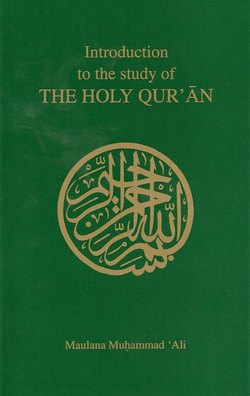Читать книгу Introduction to the Study of the Holy Qur'an - Maulana Muhammad Ali - Страница 3
На сайте Литреса книга снята с продажи.
Transliteration of Arabic Words
ОглавлениеThe transliteration system adapted for the e-book format from the standard transliteration system is given below. Due to the limitations of the e-book format in producing some of the diacritical signs, alternative diacritical signs have been used. These changes are indicated by red type.
Consonants
Arabic Letter — Sound — Represented by
hamzah — (sounds like h in hour — a sort of catch in the voice) — ’
ba — (same as b) — b
ta — (the Italian dental, softer than t) — t
tha — (between th in thing and s) — th
jim — (like g in gem) — j
ha — (very sharp but smooth guttural aspirate) — h
kha — (like ch in the Scotch word loch) — kh
dal — (Italian dental, softer than d) — d
dhal — (sounds between z and th in that) — dh
ra — (same as r) — r
za — (same as z) — z
sin — (same as s) — s
shin — (same as sh in she) — sh
sad — (strongly articulated s, like ss in hiss) — s
dad — (aspirated d, between d and z) — dz
ta — (strongly articulated palatal t) — t
za — (strongly articulated palatal z) — z
‘ain — (somewhat like a strong guttural hamzah, not a mere vowel) — ‘
ghain — (guttural g, but soft) — gh
fa — (same as f) — f
qaf — (strongly articulated guttural k) — q
kaf — (same as k) — k
lam — (same as l) — l
mim — (same as m) — m
nun — (same as n) — n
ha — (same as h) — h
waw — (same as w) — w
ya — (same as y) — y
Vowels
The vowels are represented as follows:
Short vowels:
— ’ — fathah, as u in tub — a
— ’ — kasrah, as i in pin — i
Long vowels:
— — long fathah, as a in father — a
— — long kasrah, as ee in deep — i
— ‘ — long dammah, as oo in moot — u
— — fathah before waw — au
— — fathah before ya — ai
Tanwin ’’ ’’ ‘’ is represented by an, in, un, respectively. The short and long vowels at the end of a word are shown as parts of the words, as qala where the final a stands for the fathah on lam, but the tanwin is shown as a separate syllable, as Muhammad-in.
Proper Names
Biblical proper names are not transliterated, but their Biblical form is adopted; other names are transliterated according to the rules of transliteration. Hence the reader will notice a change in such names as Mecca which should be written as Makkah, Medina which should be written as Madinah, Yemen which should be written as Yaman, and so on.
The following list shows the Biblical names and their Arabic equivalents:
Biblical Names— Arabic Form
Aaron — Harun
Abraham — Ibrahim
Adam — Adam
Amran — ‘Imran
Babel — Babil
David — Dawud
Egypt — Misr
Elias — Ilyas
Ezra — ‘Uzair
Elisha — Al-Yash‘a
Gabriel — Jibril
Gog — Ya’juj
Goliath — Jalut
Gospel — Injil
Isaac — Ishaq
Ishmael — Isma‘il
Jacob — Ya‘qub
Jesus — ‘Isa
Jew — Yahudi
Job — Ayyub
John — Yahya
Jonah — Yunus
Korah — Qarun
Lot — Lut
Magog — Ma’juj
Mary — Maryam
Michael — Mikal
Moses — Musa
Noah — Nuh
Pharaoh — Fir‘aun
Saul — Talut
Sheba — Saba’
Soloman — Sulaiman
Torah — Taurat
Zacharias — Zakariyya
